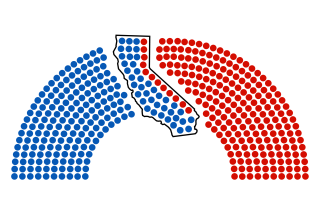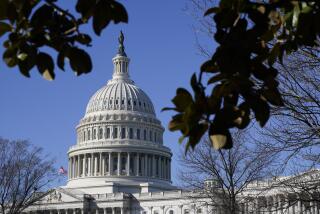Census may shift political power in California to minorities and the interior
California’s minority population has grown substantially, most dramatically in the interior of the state, according to new census figures that project a sharp rearrangement of the state’s political power during this year’s redistricting of legislative and congressional seats.
Political power will shift away from traditional strongholds such as Los Angeles and San Francisco and into the Inland Empire and Central Valley. Minorities, whose representation in the Legislature and the California congressional delegation has never matched their population numbers, could see increased opportunities to gain control of elected offices.
INTERACTIVE: Have demographics changed in your political districts?
“The California state Legislature and the congressional delegation are about to look a lot more like California. You’re going to see districts that are much more likely to elect minority candidates and a huge shift from the coast inland,” said Dan Schnur, director of USC’s Unruh Institute of Politics.
The U.S. Census Bureau figures released Tuesday show that during the past decade, the percentage of Latinos has approached parity with non-Hispanic whites — 37.6% to 40.1%, with Asians at 12.8% and blacks at 5.8%.
The release of the census data, which occurs every 10 years, is the official kickoff of a frenetic redrawing of legislative and congressional districts.
The population figures will have greater weight in California this year than ever before. In the past, legislators drew the lines into districts that protected themselves and other incumbents — creating few truly competitive seats — and often gave short shrift to minority communities.
This time, because of a voter-approved ballot measure that was strongly opposed by both political parties, an independent body will be drawing political boundaries for the state’s 53 members of Congress, 40 state senators and 80 state Assembly members for the first time in California.
The commission will hold public hearings across the state in April and May and hopes to release a draft of the redrawn districts by early June.
“We have a tremendous amount of work to do,” said Maria Blanco, a commission member from Los Angeles.
Although details about redrawn districts will not be available for months, the data released Tuesday will leave an indelible imprint on the governance of the nation’s largest state.
California grew by 3.4 million people in the last decade, a rate that was on par with the national average. But for the first time in the state’s history, California did not grow enough to gain a seat in the U.S. House of Representatives — because other states expanded more dramatically.
The data released Tuesday showed that much of California’s growth was fueled by Latinos, who saw their numbers increase nearly 28% to 14 million, and Asians, who saw a nearly 31% gain to nearly 4.8 million. The two other major demographic groups were in retreat: Non-Hispanic whites declined more than many demographers had predicted, dropping 5.4% to just under 15 million. The number of blacks declined nearly 1% to nearly 2.2 million residents.
Though most parts of the state added population, growth was greater in the interior and more anemic along the coast.
Most noteworthy there was Los Angeles County, a historic pillar of political power along with the Bay Area. The county remained the largest in the state, with 9.8 million residents. But it grew just 3.1% from 2000.
Counties in the Inland Empire and Central Valley, meanwhile, saw explosive growth through much of the decade, though it faltered somewhat in recent years as the nation suffered through the recession. Riverside County’s population increased by nearly 42% between 2000 and 2010; Kern County grew nearly 27%.
Those population changes mean that inland areas are likely to see their congressional and legislative delegations grow, as coastal areas see their representation decline.
“In both San Francisco and Los Angeles, the post-redistricting political landscape is going to look like a game of musical chairs — with switchblades,” Schnur said. “There’s simply no way that either the Southland or the Bay Area is going to be able to support as many seats, so some of those members are either going to move east or go home.”
Some California Republicans greeted the shift as a sign that they could increase their numbers, since inland areas have historically leaned Republican.
“Certainly this is shaping up for a very dynamic 2012 election for everyone,” said Ron Nehring, chairman of the California Republican Party, who argued that the burgeoning inland growth showed that Californians were retreating from the state’s liberal bases.
But others noted that Latinos, who drove the population change, have traditionally voted Democratic and that their increased presence in inland areas may offset conservative voters.
Riverside County, for example, has seen its Latino population increase 78%. That could present problems for the region’s elected officials, such as U.S. Rep. Ken Calvert (R-Corona), who represents parts of Orange and Riverside counties. The Latino population in his district increased 64%.
“The population is shifting inland but the districts are no longer as conservative and Republican as they were,” said GOP consultant Adam Mendelsohn.
The population growth is “largely Latino, and I do think if Republicans want to take advantage of the opportunity of more people coming inland, it’s going to require a change in message and approach,” he said. “They’re still largely communicating with older white conservatives, and until their message expands beyond those groups, they will struggle in their geographic strongholds as more and more Latinos make up the inland voting base.”
Democratic incumbents will face challenges of their own, even though they represent the state’s biggest political party. The coastal areas likely to lose seats are the party’s strongholds.
Los Angeles County’s black population may not be large enough to support the three congressional representatives in historically African American districts — Democrats Laura Richardson, Karen Bass and Maxine Waters. As the districts are redrawn, one of their seats could be moved to the Inland Empire, or the lines could be shifted so that two incumbents end up residing in the same district, creating an intraparty battle for the nomination.
The Latino population in the San Fernando Valley is large enough that it will probably end up with enough power to choose a congressional representative, which could create problems for Reps. Brad Sherman, Henry A. Waxman or Howard L. Berman, all of them white Democratic veterans.
“This causes more disruption for Los Angeles legislators than I would have thought, because what do you do with all those districts bumping into one another?” said Tony Quinn, a former legislative redistricting staffer. “You create ripples in all directions.”
A spokesman with the state Democratic Party said such matters were in the hands of the redistricting commission.
“Like everyone else, we’re waiting for those maps to come out,” Tenoch Flores said. “It’s too early to say one way or the other.”
The Citizens Redistricting Commission, which will use the population data released Tuesday to draw legislative and congressional boundaries, is required to create districts of equal size. Districts cannot be drawn to protect incumbents, or to dilute a minority community’s strength.
More to Read
Start your day right
Sign up for Essential California for news, features and recommendations from the L.A. Times and beyond in your inbox six days a week.
You may occasionally receive promotional content from the Los Angeles Times.







